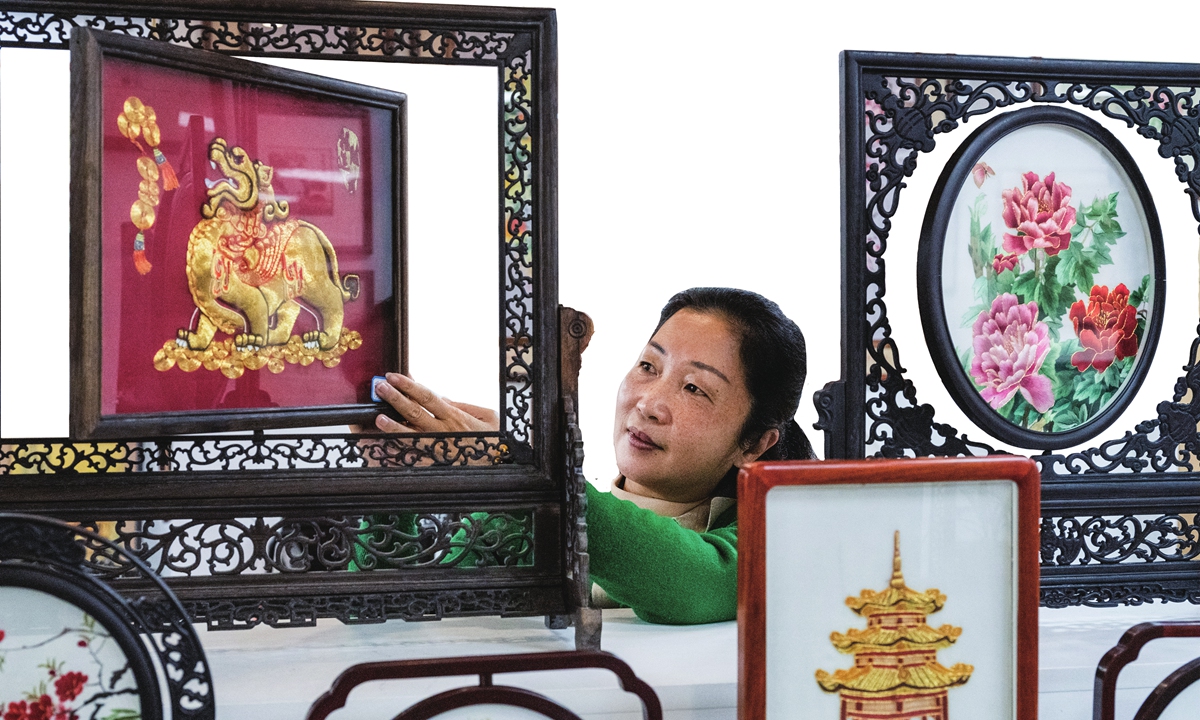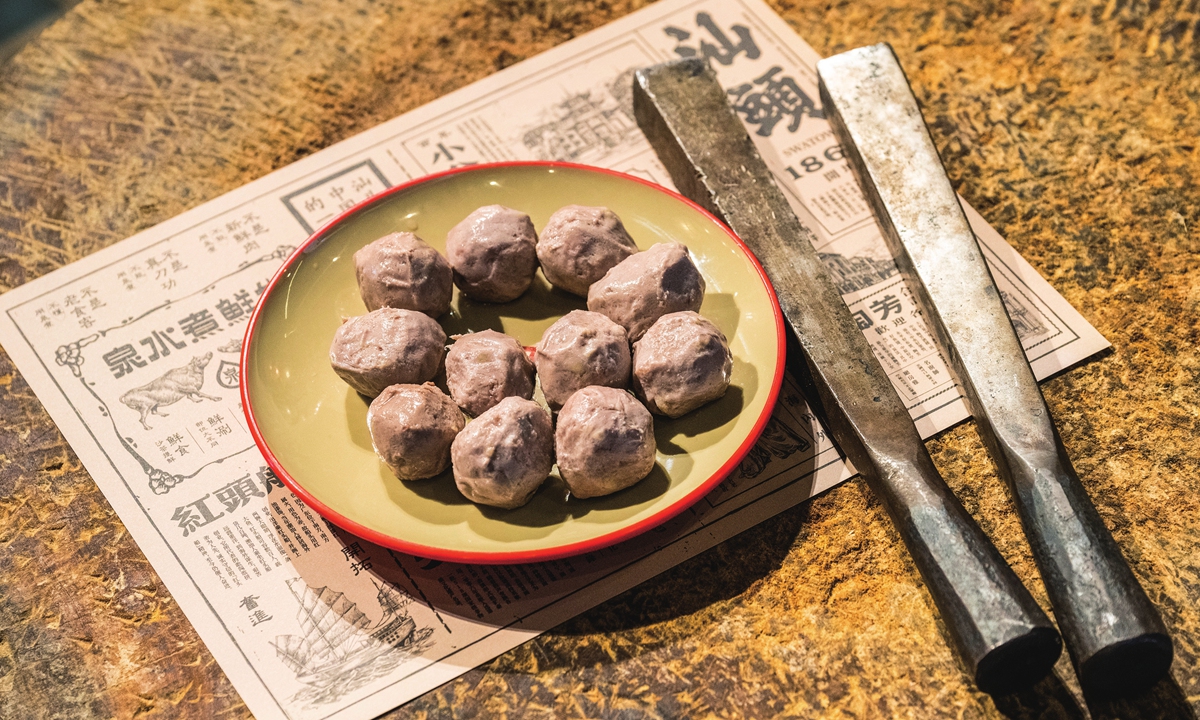Local people in Shantou, South China's Guangdong Province rarely greet someone with handshakes. Instead, they will often welcome people, including strangers with a cup of "Phoenix Dancong," a type of aromatic oolong tea, also a local specialty.
Compared to provincial capital Guangzhou, Shantou used to be an open commercial port and now a modern third-tier city characterized by a much slower-paced lifestyle.
'Sculpture on textile'Spending all day long in a studio sorting out silk threads is part of Hong Yujing's daily routine.
Hong, a 57-year-old Shantou local and an inheritor of Chaozhou embroidery art, told the Global Times that she has been practicing this art form since she was 5.
The Chaozhou embroidery is a part of Chinese Intangible Cultural Heritage (ICH) that originated in the Tang Dynasty (618-907) and developed in the Chaoshan area which refers to three cities, Jieyang, Chaozhou as well as Shanshou.
Unlike the delicate Suzhou embroidery and the smooth Shu embroidery famous in Sichuan Province, Chaozhou embroidery is characterized by vibrant colors, particularly red and black. Hong emphasized two defining features of Chaozhou embroidery: the use of "golden thread" and "3D visual aesthetics."
For instance, Hong's depiction of a koi fish showcases her skillful use of mulberry silk threads dyed in varying shades of orange, red, and pink to capture the fish's intricate scales. Golden threads are then meticulously applied to delineate the fish's silhouette, showcasing the artistry and attention to details synonymous with Chaozhou embroidery.
Animals and Chinese mythological beasts such as the pixiu are often featured in Chaozhou embroidery. Artisans employ techniques such as padding cotton and wool chunks beneath the embroidery cloth to create an embossed effect, enhancing the pieces' "3D visual aesthetics," as described by Hong.
Often referred to as the "sculpture on textile," Chaozhou embroidery garners admiration not only from locals, but also from international enthusiasts in European countries like Germany.
Hong told the Global Times that in 2021, she met with a group of German students at a local cultural exchange event in Berlin.

Inheritor Hong Yujing and her Chaozhou embroidery artworks Photo: Chen Tao/GT

Chaoshan meatballs Photo: Chen Tao/GT
Her art was a rare opportunity for those kids to see an aspect of authentic traditional Chinese culture.
By also stitching a tiny flower on a German artist's belt, Chaozhou embroidery became a token of friendship that underscored the global appeal of Chaozhou embroidery, serving as a channel for cross-cultural understanding.
"Those children and parents' desire to learn this art form from me was so overwhelming, it later made their school 'break its rule' by allowing kids to use needles," Hong reminisced, adding that the Chaozhou embroidery really highlights the "delicate and elegant" Chinese style.
2 million to 200 million Visitors to Shantou cannot miss out on trying the local handcrafted "thumped" beef balls.
Unlike industrially produced meatballs, the Shantou beef balls are entirely handmade. With only basic tools such as a cutting board, a big chunk of raw beef will be tenderized by a skillful chef for hours.
Chen Zhibin, an inheritor of the ICH culinary art Chaoshan meatball since 1997, told the Global Times that 30 minutes of tenderizing 2.5 kilograms of beef only yields around 20 balls.
Chen exemplifies the locals' dedication to preserving this artisanal craft.
Despite acknowledging the challenges faced by younger generations in continuing manual, labor-intensive practices, Chen remains committed to upholding the cultural legacy of Chaoshan meatballs.
Originally a royal delicacy, Chaoshan meatballs have evolved into a symbol of local identity, cultural tourism, and economic growth for Shantou. Chen's enterprise, the Chao Ting Food Processing Company, represents a shift towards industrialization while maintaining the essence of traditional craftsmanship.
Chen explained that nowadays the dish has transformed from just a food to the fulcrum of Shantou's culture and tourism, and even its economic growth.
From January to September 2023, the city of Shantou has exported 4.16 billion yuan ($554 million) of agricultural products, and the beef ball is one of the most iconic ones, which is well-received by countries such as Thailand and Singapore.
Back in early 2015, around 40,000 kilograms of beef balls were exported per day from Shantou, bringing about an overall output value of around 1.5 billion yuan for the city.
The enterprise now includes not only a beef ball processing factory, but also several franchised restaurants with the same name, raising its value from 2 million yuan to 200 million yuan in less than 20 years.
"Turning a small workshop to an industrialized business is essential for us to continue our beef ball culture. It caters to how the modern world works, and it can engage more people in sharing our collective cultural memory," Chen told the Global Times.